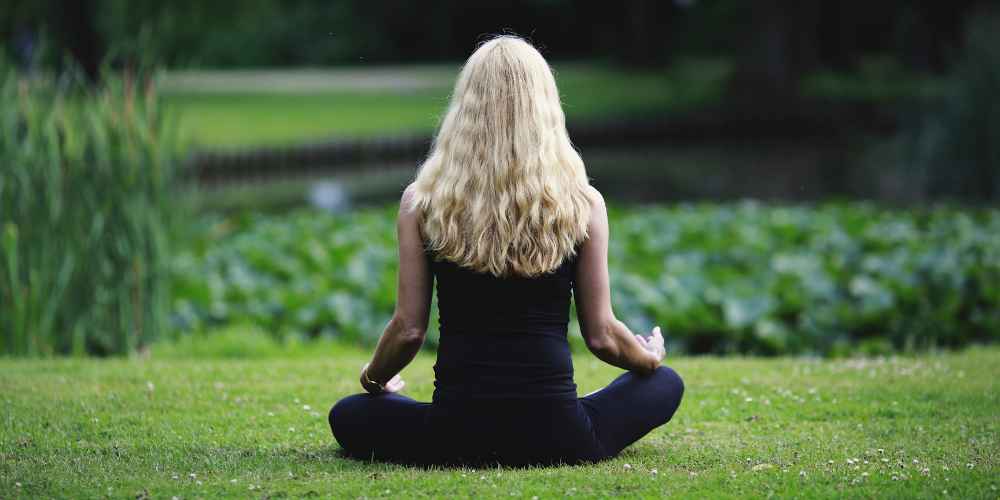Introduction
Are you tired of feeling overwhelmed, stressed, and disconnected from the present moment? Imagine having a simple daily practice that could help you reclaim your inner peace, boost your focus, and improve your overall well-being—all in just 10 minutes a day. If this sounds too good to be true, think again. Let’s explore how mindfulness can transform your life and help you embrace every moment with clarity and purpose.
Key Takeaways
- Mindfulness helps improve mental clarity, emotional resilience, and physical health.
- Practicing mindfulness for just 10 minutes daily can lead to transformative benefits.
- Focus on the present moment using techniques like mindful breathing and body scans.
- Create a dedicated mindfulness space to establish a consistent practice.
- Use tools like apps, reminders, and guided meditations to stay consistent.
- Incorporate mindfulness into daily activities like eating, walking, and working.
- Nature-based mindfulness, such as outdoor walks or gardening, enhances the practice.
- Family mindfulness activities strengthen bonds and teach emotional coping skills.
- Mindfulness in the workplace boosts focus, productivity, and stress management.
- Over time, mindfulness rewires the brain for lasting happiness and reduced stress.
- Advanced techniques like mantra meditation and journaling deepen mindfulness.
- Overcoming initial challenges ensures long-term success in the practice.
1. What Is Mindfulness and Why Does It Matter?
Mindfulness is the practice of being fully aware and present in the moment, without judgment or distraction. It involves paying attention to your thoughts, emotions, and physical sensations in a non-reactive way. Instead of dwelling on past regrets or worrying about the future, mindfulness encourages you to live fully in the present.
By embracing this practice, you develop a sense of acceptance and non-judgment towards yourself and others. Mindfulness is not about achieving perfection but about cultivating a greater awareness of your experiences. With daily practice, it can significantly improve mental clarity, reduce stress, and increase emotional resilience, making it easier to navigate the challenges of everyday life.
“Mindfulness is the key to a happy and fulfilling life.” – Jon Kabat-Zinn
2. Benefits of Practicing Mindfulness Daily
Mental Benefits
- Reduces Stress and Anxiety: Mindfulness has been shown to decrease levels of cortisol, the stress hormone, which helps lower overall stress and anxiety. By focusing on the present moment, mindfulness interrupts the cycle of negative thinking that often fuels stress.
- Improves Focus: Mindfulness enhances your ability to concentrate by training the mind to avoid distractions. Regular practice strengthens cognitive functions, improving attention, decision-making, and mental clarity.
- Boosts Emotional Health: Practicing mindfulness helps regulate emotions and reduces the impact of negative emotional states. By acknowledging emotions without judgment, mindfulness allows you to process and release them, leading to improved mental health and a greater sense of well-being.
Physical Benefits
- Enhances Sleep: Mindfulness promotes relaxation by activating the body’s relaxation response. As a result, individuals who practice mindfulness regularly experience improvements in sleep quality, falling asleep more easily and staying asleep longer.
- Lowers Blood Pressure: By calming the nervous system and reducing stress, mindfulness has been linked to lower blood pressure. It helps relax the heart and blood vessels, reducing strain on the cardiovascular system.
- Strengthens Immunity: Studies have shown that mindfulness practices boost the immune system. Regular meditation and mindful activities improve the body’s ability to fight off illnesses by reducing stress and enhancing overall well-being.
Social Benefits
- Improves Relationships: Mindfulness fosters empathy and understanding, which helps improve communication in relationships. By being present and attentive, you can connect more deeply with others and respond thoughtfully, enhancing your interpersonal connections.
- Reduces Reactivity: Practicing mindfulness increases emotional awareness, enabling you to respond to situations more calmly and constructively. This leads to better conflict resolution and a reduction in impulsive reactions, improving social dynamics.
3. The Science Behind Mindfulness
Scientific research provides compelling evidence for the impact of mindfulness on brain function. Regular mindfulness practice leads to physical changes in the brain, especially in areas that regulate emotional responses, decision-making, and memory. Studies show that mindfulness enhances neuroplasticity, which is the brain’s ability to adapt and change over time.
Mindfulness Benefits on Brain Regions
| Brain Region | Function | Effect of Mindfulness |
| Prefrontal Cortex | Decision-making, Focus | Enhanced cognitive control, better focus and decision-making ability. |
| Amygdala | Emotion Processing | Reduced stress, less emotional reactivity, improved emotional regulation. |
| Hippocampus | Memory, Learning | Improved memory retention, increased resilience, and better learning abilities. |
- Prefrontal Cortex: Mindfulness strengthens the prefrontal cortex, the area responsible for higher cognitive functions like decision-making and focus. It allows for better control over impulses and greater awareness of emotions and thoughts, improving self-regulation.
- Amygdala: The amygdala processes emotions, particularly fear and stress. Through mindfulness, the size of the amygdala can decrease, leading to less emotional reactivity and a more balanced response to stressors. This explains why mindfulness helps reduce anxiety and improve emotional regulation.
- Hippocampus: The hippocampus plays a key role in memory and learning. Research suggests that mindfulness can increase the volume of gray matter in this region, enhancing memory and cognitive flexibility. This results in greater resilience to stress and a sharper ability to learn and adapt.
Mindfulness isn’t just a mental or emotional exercise—it has profound effects on the structure and function of the brain, which translates into long-term benefits for both the mind and body.

4. How to Practice Mindfulness Daily
1. Start Your Day with a Breathing Exercise
Starting your day with a brief breathing exercise sets the tone for mindfulness throughout the day. Begin by spending just 2 minutes focusing on your breath. Sit in a comfortable position, inhale deeply through your nose, hold for a few seconds, then exhale slowly through your mouth. As you breathe, try to clear your mind of any distractions.
This simple practice activates the parasympathetic nervous system, helping to calm the body and center your mind. It can also help reduce any morning stress, setting a peaceful foundation for the rest of the day. A short but focused breathing session can be a powerful way to create mental clarity and foster a sense of calm that lasts throughout the day.
2. Mindful Eating
Mindful eating encourages you to engage fully with the experience of eating, rather than rushing through meals or multitasking. Start by paying attention to the colors, textures, and aromas of your food. As you take a bite, savor the taste and the sensation of chewing, noticing how the food makes you feel. Avoid distractions like your phone, TV, or reading, as these can lead to overeating or not fully appreciating your meal.
By practicing mindful eating, you can enhance your digestion, increase your enjoyment of food, and develop a deeper sense of gratitude for the nourishment it provides. Eating mindfully can also help you develop healthier eating habits, as it encourages you to listen to your body’s hunger cues rather than eating out of habit or boredom.
3. Incorporate a Body Scan
A body scan is a simple but effective mindfulness practice that involves mentally scanning your body for areas of tension. Spend 5 minutes before bed lying down in a comfortable position and focus on each part of your body, starting from your toes and moving up to your head. As you mentally note each body part, consciously relax any areas where you notice tension.
This practice not only helps release physical stress but also promotes mental relaxation, making it easier to wind down for a restful night’s sleep. By making the body scan a nightly habit, you can reduce muscle tension and promote better sleep quality, contributing to overall well-being.
5. The 10-Minute Daily Mindfulness Routine
1. Set a Timer
To avoid feeling overwhelmed by the idea of mindfulness, start small with just 10 minutes a day. Set a timer on your phone or an alarm to let you know when your 10 minutes are up. This ensures that you don’t get lost in the moment or pressure yourself to practice for too long. Starting small makes mindfulness more manageable and sustainable, and over time, you may choose to extend your practice as it becomes an ingrained part of your daily routine.
2. Find a Quiet Spot
Choose a quiet, peaceful spot where you can practice mindfulness without distractions. This could be a corner of your home, a spot in your backyard, or even a quiet park bench. The key is to ensure the space allows you to focus and be present without interruptions. If possible, try to practice at the same time and in the same place every day, as consistency helps reinforce the habit and makes it easier to slip into a mindful state. Having a designated spot can act as a mental trigger, signaling your brain that it’s time to relax and focus.
3. Focus on Your Breath
For the next few minutes, focus your attention on your breath. Inhale deeply and exhale slowly, observing the rise and fall of your chest and abdomen. Your thoughts will inevitably wander—this is normal. When that happens, gently bring your focus back to your breath without judgment or frustration.
It’s important to be patient with yourself during this process. The goal isn’t to stop your thoughts entirely, but to acknowledge them without getting attached to them and then return to your breath. Over time, this practice strengthens your ability to stay present and improves mental clarity.
4. Practice Gratitude
Finish your 10-minute routine by spending the last 2 minutes reflecting on what you’re grateful for. This could be anything from your health, relationships, or the simple beauty of nature. Taking a moment to express gratitude helps to shift your mindset toward positivity and abundance. Gratitude has been shown to boost mental well-being, increase happiness, and even improve physical health.
By focusing on what you have, rather than what you lack, you can cultivate a deeper sense of contentment and emotional resilience. This simple practice can also foster a greater appreciation for life, which can carry over into other areas of your day.
This quick table can provide an overview of how mindfulness improves over time with consistent practice.
| Time Frame | Benefits | Impact |
| 1 Week | Reduced stress levels, improved focus | Feel calmer and more centered |
| 1 Month | Increased emotional resilience, better sleep | Noticeable improvements in mood and rest |
| 3 Months | Enhanced mental clarity, improved relationships | Clearer thinking, improved interactions |
| 6 Months | Heightened self-awareness, reduced anxiety | Increased confidence and emotional balance |
| 1 Year | Long-term focus and emotional stability | Long-lasting reduction in stress and greater overall well-being |
6. Common Challenges and How to Overcome Them
Challenge 1: Lack of Time
One of the most common reasons people skip mindfulness practice is a lack of time. In today’s busy world, it can feel like there’s never enough time to slow down and focus on the present. However, mindfulness can be easily incorporated into daily life by using waiting periods.
Whether you’re waiting in line, commuting, or sitting at your desk, these moments can serve as opportunities to practice mindfulness. You can use these brief periods to focus on your breath, engage in a short body scan, or simply bring awareness to your surroundings. Finding small windows of time throughout the day makes it easier to stay consistent without feeling overwhelmed.
Challenge 2: Wandering Mind
A wandering mind is a natural part of the mindfulness process. It’s easy to become frustrated when you can’t seem to keep your attention focused, especially if you’re just starting out. The key is to gently bring your attention back to the present moment whenever your mind drifts.
Rather than judging yourself or feeling defeated, view each moment of distraction as an opportunity to practice patience and self-compassion. The more you practice returning your focus to the breath or the task at hand, the better you will get at training your mind to stay present.
Challenge 3: Inconsistent Practice
Consistency can be difficult when establishing a new habit, and mindfulness is no exception. If you find yourself skipping days, the solution is to schedule your mindfulness practice just like any other important activity in your day. You wouldn’t skip brushing your teeth, so why skip your mindfulness practice?
Set a regular time each day—whether in the morning, during lunch, or before bed—and commit to making mindfulness a non-negotiable part of your routine. Using reminders on your phone or setting a specific place for your practice can also help make it a habit you don’t forget.
This table can quickly help you understand the different ways to practice mindfulness, offering variety for overcoming challenges:-
| Mindfulness Practice | Description | Benefit |
| Breathing Exercises | Focus on deep breathing to center your mind. | Reduces stress, calms the nervous system |
| Body Scan | Mentally scan your body from head to toe, releasing tension. | Improves relaxation and promotes sleep |
| Mindful Eating | Focus on the taste, texture, and aroma of food. | Enhances digestion and fosters gratitude |
| Gratitude Practice | Reflect on things you’re thankful for. | Boosts positivity and happiness |
| Walking Meditation | Walk slowly and focus on each step and breath. | Promotes mindfulness and improves focus |

7. How Mindfulness Transforms Your Life
Enhanced Mental Clarity
Practicing mindfulness daily is a powerful tool for clearing mental clutter. By focusing on the present moment and letting go of distractions, you create space for better decision-making and increased productivity. When you’re not constantly caught up in worries about the past or future, you can direct your energy and attention toward the tasks at hand.
This improved clarity allows you to think more clearly, make better choices, and tackle challenges more effectively. As your ability to focus sharpens, you may notice improvements in your work, creativity, and overall efficiency, which leads to a more productive and fulfilling life.
Improved Emotional Resilience
Mindfulness encourages a non-reactive attitude, meaning you’re better able to handle life’s ups and downs without becoming overwhelmed. Instead of reacting impulsively to difficult emotions, mindfulness teaches you to pause, observe your feelings, and respond thoughtfully. This allows you to manage stress, frustration, and other negative emotions in a healthier way.
Over time, practicing mindfulness builds emotional resilience, helping you stay calm and composed in the face of challenges. Whether it’s dealing with a stressful situation at work or a conflict with a loved one, mindfulness enables you to approach problems with a clear, balanced mindset.
Stronger Relationships
Mindfulness can significantly improve your relationships by helping you be more present with others. When you practice mindfulness, you learn to give your full attention to the person in front of you. This means listening actively, observing their emotions, and responding with empathy.
By being truly present in conversations, you can create deeper connections and enhance communication with loved ones. This practice helps foster greater understanding, compassion, and trust, which are essential for healthy relationships. Whether it’s with a partner, family member, or friend, mindfulness allows you to nurture your relationships and improve how you interact with those around you.
8. Incorporating Mindfulness into Different Activities
During Work
Work can often feel like a whirlwind of tasks, meetings, and deadlines, but incorporating mindfulness into your workday can help reduce stress and boost productivity. Take short, intentional breaks throughout your day to focus on your breath or do a quick body scan.
These mini mindfulness sessions help reset your mind and allow you to approach tasks with renewed focus. You can also practice mindful listening during meetings or conversations, giving your full attention to the speaker and responding thoughtfully. By being mindful in the workplace, you’ll reduce stress, enhance creativity, and improve the quality of your work.
While Exercising
Exercise is a great opportunity to pair physical activity with mindfulness. Instead of rushing through your workout or letting your mind wander, focus on your body’s movements and your breath. Pay attention to how your muscles feel as you stretch, lift, or run, and notice the rhythm of your breathing as you move.
By integrating mindfulness into exercise, you can create a deeper connection with your body and the present moment. This can lead to more effective workouts, improved performance, and a greater sense of enjoyment and well-being. Whether you’re practicing yoga, running, or lifting weights, mindfulness can help you tune into your body and make the experience more fulfilling.
In Daily Chores
Even daily chores can be transformed into mindfulness exercises. Rather than rushing through tasks like washing dishes, folding laundry, or sweeping the floor, you can turn them into opportunities to practice mindfulness. Focus on the sensations of your hands touching the items, the sounds of the task, and the movements involved.
For example, as you wash dishes, notice the warmth of the water, the soap’s fragrance, and the sound of the water splashing. These small moments of mindfulness can help reduce stress, bring a sense of peace, and make mundane tasks feel more purposeful. By turning everyday chores into mindful exercises, you can cultivate a sense of presence and gratitude in the midst of your busy day.

9. The Roots of Mindfulness
A Brief History of Mindfulness
Mindfulness has its origins in ancient Buddhist traditions, particularly in meditation practices. Over centuries, it evolved as a secular technique, becoming popular in Western cultures through the works of Jon Kabat-Zinn and others. Today, mindfulness is widely used in clinical, corporate, and educational settings to enhance well-being.
Mindfulness in the Modern World
In our fast-paced, technology-driven society, mindfulness has gained momentum as a counterbalance to constant distractions. Techniques like guided meditations and mindful breathing are now easily accessible through apps and online resources, making it easier than ever to incorporate mindfulness into daily life.
10. Practical Tips to Build a Consistent Mindfulness Practice
Create a Mindfulness Space
Designating a quiet corner in your home for mindfulness activities can significantly enhance your practice. This space doesn’t need to be large or elaborate; it’s about creating a dedicated, peaceful environment where you can focus without distractions. You can add calming elements such as a soft cushion for seating, candles to create a serene ambiance, or plants that connect you with nature.
Use Technology to Your Advantage
In today’s digital world, there are many mindfulness apps available that can help guide your practice. Apps like Calm, Headspace, and Insight Timer provide structured meditations, relaxation techniques, and reminders to help you stay consistent.
Many apps also offer customizable timers, guided sessions, and even soothing sounds to enhance your practice. These tools can be particularly useful for beginners who may struggle with staying focused. Set daily reminders on your phone to prompt you to take a few minutes for mindfulness, making it easier to incorporate into your busy routine.
Partner with Accountability Buddies
Accountability can be a powerful motivator when it comes to building a habit, and mindfulness is no exception. Find a friend, family member, or colleague who also wants to practice mindfulness, and schedule regular sessions together. Whether you meditate at the same time each day or simply check in with each other about your progress, having a mindfulness buddy can help keep you on track.
This table can guide you on using technology to supplement their mindfulness journey:-
| App Name | Features | Benefit |
| Headspace | Guided meditations, breathing exercises, sleep aids. | Offers structured programs to support mindfulness |
| Calm | Sleep stories, guided meditation, breathing exercises. | Great for relaxation and sleep improvement |
| Insight Timer | Free guided meditations, community discussions, and music. | Large variety of meditation options for all levels |
| 10% Happier | Practical mindfulness lessons with experts. | Focuses on integrating mindfulness into daily life |
11. Mindfulness in Nature
Nature Offers an Ideal Setting for Mindfulness
Nature provides an ideal setting for practicing mindfulness. The natural world is full of sensory stimuli that can bring you into the present moment—whether it’s the sound of birds chirping, the rustle of leaves in the wind, or the rhythmic flow of a nearby stream. The calming influence of nature helps ground you, making it easier to focus on the present and let go of distractions. Spending time outdoors allows you to connect with the earth, breathing fresh air and absorbing the sights and sounds of the world around you.
Practice Outdoor Mindfulness
Outdoor mindfulness doesn’t require long periods of time; even a 10-minute walk in a park can be enough to bring you back to the present moment. During your walk, pay attention to the sensations of your footsteps, the texture of the ground beneath you, and the movement of your body. Notice the gentle breeze on your skin, the warmth of the sun, and the beauty of the surrounding scenery. Let go of any mental chatter and simply observe.
Gardening as Mindfulness
Gardening is a wonderful way to practice mindfulness because it naturally encourages you to focus on the present moment. Tending to plants involves engaging with the earth, feeling the texture of the soil, and being attuned to the growth and care of each plant. As you dig, water, or prune, you can focus all your attention on the sensory experience of the activity—whether it’s the smell of fresh soil, the feel of the plants in your hands, or the sight of new growth.

12. Mindfulness and the Workplace
Incorporating mindfulness into your workday can have a profound impact on your productivity, mental well-being, and overall job satisfaction. Work environments can often be stressful, with tight deadlines, long hours, and numerous responsibilities. Practicing mindfulness in such an environment helps reduce stress, increase focus, and promote emotional resilience, all of which contribute to a healthier and more productive work life.
Quick Office Mindfulness Practices
- Mindful Emails: Communication in the workplace can sometimes become rushed, leading to misunderstandings or unclear messages. Before sending an email, take a moment to pause and read it with full attention. Make sure the tone, clarity, and content are aligned with your intentions.
- Desk Breathing Exercise: Our workdays are often filled with constant activity, leaving little time to reset our focus. A simple and effective technique is to take a minute to close your eyes and focus on deep breathing. Inhale slowly for a count of four, hold for a few seconds, and exhale for a count of four. Repeat this for a few breaths. It helps reset your mind, reduce stress, and refocus your attention for the tasks ahead
Corporate Mindfulness Programs
In recent years, many companies have recognized the benefits of mindfulness for employee well-being. As a result, corporate mindfulness programs and workshops are becoming more popular. These programs typically include mindfulness practices like meditation, breathing exercises, and stress reduction techniques, all designed to help employees manage workplace pressures.
If your company doesn’t already offer these programs, consider suggesting them to your HR department or team leaders. The evidence supporting the benefits of mindfulness for productivity, stress reduction, and overall employee satisfaction is growing, making it a worthwhile investment for any organization.
This table can offer practical office-related mindfulness exercises to integrate into a busy workday:-
| Mindfulness Practice | How to Implement at Work | Benefit |
| Desk Breathing Exercises | Take a minute to close your eyes, focus on your breath, and exhale slowly. | Reduces stress, increases focus, and resets energy levels |
| Mindful Breaks | Step away from your desk and take a brief walk, focusing on the sensations of your body. | Relieves tension, boosts creativity and energy |
| Mindful Listening During Meetings | Focus fully on what colleagues are saying without distractions. | Improves communication and enhances understanding |
| Mindful Email Writing | Pause and reflect on your email content before sending. | Ensures clarity and reduces misunderstandings |
13. Mindfulness for Families
Mindfulness can significantly enhance family dynamics, fostering stronger connections and helping everyone cope with the challenges of daily life. By practicing mindfulness as a family, you teach valuable skills such as emotional regulation, focus, and compassion. These skills can help both parents and children handle stress, manage conflicts, and improve overall family well-being.
Family Mindfulness Activities
- Gratitude Circle: One simple and effective way to practice mindfulness as a family is through a gratitude circle. Each family member can take turns sharing one thing they are grateful for that day. This practice fosters positive thinking, encourages empathy, and strengthens emotional bonds. It’s a great way to create a mindful, positive atmosphere in the home, especially after dinner or before bedtime.
- Mindful Storytime: Reading together as a family is an excellent opportunity to practice mindfulness. While reading a book, focus on the emotions of the characters and the themes of the story. Encourage children to notice how the characters might be feeling, and ask questions about what they think the characters will do next.
- Mindful Games: Mindfulness doesn’t always have to be serious or structured; it can be incorporated into playful activities too. One fun and engaging game to try is “mindful listening.” Sit together as a family and take turns identifying different sounds in the environment—whether it’s birds chirping outside, the hum of the refrigerator, or footsteps in the hall.
This table can provide family-friendly mindfulness activities to encourage collective practice:-
| Activity | Description | Benefit |
| Mindful Breathing Together | Practice deep breathing as a family, focusing on inhaling and exhaling together. | Promotes relaxation and unity within the family |
| Mindful Listening | Take turns listening to different sounds (e.g., nature sounds) and share what you hear. | Improves focus, communication, and listening skills |
| Family Walk in Nature | Take a slow, mindful walk in nature, focusing on sights, sounds, and physical sensations. | Encourages connection to nature and each other |
| Mindful Art Projects | Create art together while being present and focused on the activity. | Sparks creativity and mindfulness in a fun way |

14. The Role of Mindfulness in Managing Chronic Stress
Chronic stress has become a common struggle in today’s fast-paced world. Whether from work, personal issues, or health concerns, stress can severely affect your mental, emotional, and physical well-being. Fortunately, mindfulness offers a powerful tool for managing and reducing stress, helping to restore balance in your life. Regular mindfulness practice can help break the cycle of stress, bringing you back to a state of calm and focus, enabling you to handle life’s challenges with greater ease.
The Stress-Mindfulness Connection
When stress is activated in the body, the “fight or flight” response is triggered, leading to the release of cortisol and other stress hormones. Over time, this chronic release can have harmful effects on the body, including weakened immunity, high blood pressure, and digestive issues.
Mindfulness counteracts this by activating the body’s relaxation response, which calms the nervous system and helps lower cortisol levels. By being present and accepting in the moment, mindfulness encourages a state of calm, helping you feel more grounded and less overwhelmed by stress.
Guided Visualization
One effective mindfulness practice for managing stress is guided visualization. This technique involves imagining yourself in a peaceful, serene environment, allowing your mind and body to relax. It can be as simple as picturing yourself sitting by a calm beach or walking through a quiet forest.
A 10-minute visualization exercise can help calm your mind, reduce anxiety, and provide an escape from the stress of daily life. This practice enhances the mind-body connection, making it easier to navigate stressful situations with a calm and clear mindset.
This table can explain the scientific basis behind mindfulness’ effectiveness in stress management:-
| Mindfulness Technique | How It Reduces Stress | Scientific Findings |
| Focused Breathing | Activates the parasympathetic nervous system, promoting calm. | Decreases cortisol levels (stress hormone) |
| Body Scan | Relieves muscle tension, promoting physical relaxation. | Reduces blood pressure and heart rate |
| Mindful Awareness of Thoughts | Helps to detach from stress-inducing thoughts. | Enhances emotional regulation and reduces reactivity |
| Loving-Kindness Meditation | Fosters a sense of compassion, reducing self-criticism. | Increases empathy and positive emotions |
15. Advanced Mindfulness Techniques
As you become more experienced with mindfulness, you may want to explore deeper practices to enhance your skills and deepen your sense of peace. Advanced mindfulness techniques, such as mantra meditation and mindful journaling, provide additional ways to focus the mind and cultivate greater self-awareness. These practices can help you stay present during more challenging or overwhelming moments and support your overall well-being in the long run.
Mantra Meditation
Mantra meditation is a technique where you repeat a specific word or phrase, known as a mantra, to focus your attention and calm your mind. Words like “peace,” “calm,” or “breathe” can be used to create a focal point during meditation.
The repetition of the mantra helps quiet the mind, allowing you to enter a state of deeper relaxation and concentration. This practice can be particularly beneficial when you feel stressed, anxious, or overwhelmed, as the mantra acts as an anchor that helps center your thoughts and emotions, bringing you back to the present moment.
Mindful Journaling
Mindful journaling involves reflecting on your thoughts and feelings in a conscious, non-judgmental way. Instead of writing simply to document your day, this practice invites you to explore your inner experiences with curiosity and compassion.
You can begin each entry by focusing on your breath and becoming present before putting your thoughts down on paper. Mindful journaling promotes self-awareness by helping you gain insights into your emotions, thought patterns, and behaviors. Over time, it enhances emotional intelligence, clarity, and provides a space to process difficult emotions, supporting both your mindfulness and overall mental health.
Conclusion: Why Mindfulness Is a Long-Term Investment
Mindfulness isn’t just a quick fix for short-term stress relief; it’s a lifelong practice that can have lasting benefits for your health, happiness, and relationships. By committing to mindfulness over time, you train your brain to become more resilient, emotionally aware, and present in every aspect of your life.
Studies show that mindfulness rewires the brain, helping to build stronger connections in areas related to focus, decision-making, and emotional regulation. This ongoing practice reduces the likelihood of chronic illnesses related to stress, such as heart disease, depression, and anxiety. The long-term benefits of mindfulness also extend to personal relationships, improving communication, empathy, and connection with others.
As the saying goes, “The best time to start practicing mindfulness was yesterday. The second-best time is today.” No matter where you are on your journey, mindfulness is a valuable investment that pays off over time by enhancing your emotional, mental, and physical well-being. Whether you’re looking to reduce stress, build emotional resilience, or cultivate deeper relationships, mindfulness provides a path toward lasting peace and fulfillment.
Frequently Asked Questions
1. How long does it take to see results from mindfulness?
Most people begin to experience noticeable benefits, such as reduced stress, improved focus, and a greater sense of well-being, within a few weeks of consistent practice. However, the timeline can vary depending on individual circumstances, such as the frequency of practice and the specific goals you’re trying to achieve. With regular mindfulness practice, you may start noticing improvements in emotional regulation, mental clarity, and overall stress reduction.
2. Can mindfulness replace therapy or medication?
While mindfulness is a powerful tool for managing stress, improving mental clarity, and enhancing emotional well-being, it should not be seen as a replacement for professional medical or psychological care. If you’re dealing with severe mental health issues such as anxiety, depression, or trauma, therapy and medication may be necessary for effective treatment.
3. Is mindfulness tied to any religion?
No, mindfulness is not tied to any particular religion. While mindfulness has roots in Buddhist meditation practices, it is now widely regarded as a secular practice focused on mental and emotional well-being. Mindfulness is based on principles of psychology and can be practiced by people of all backgrounds, regardless of their religious or spiritual beliefs.
4. What’s the best time to practice mindfulness?
The best time to practice mindfulness depends on your schedule and personal preferences. Many people find it helpful to practice in the morning, as it sets a calm and focused tone for the day ahead. Others prefer practicing mindfulness in the evening as a way to wind down and clear their minds before sleep. However, mindfulness can be practiced at any time of the day when you feel the need for a mental reset.
5. Can kids practice mindfulness too?
Yes, kids can absolutely practice mindfulness, and it can be particularly helpful for managing emotions, improving focus, and building resilience in young minds. Simple mindfulness techniques such as deep breathing, body scans, and mindful listening can be adapted for children. These practices teach kids how to be aware of their emotions and physical sensations without judgment, fostering emotional intelligence and self-regulation.








[…] mindfulness practice brings lasting benefits. It can improve stress levels, depression symptoms, and even physical […]
[…] is more than a trend; it’s backed by science. Studies show that practicing mindfulness for just 10 minutes a day can lower stress, improve memory, and enhance problem-solving skills. It’s not just about finding […]
[…] When paired with gentle, purposeful movements, mindfulness can lower cortisol levels, reduce muscle tension, and help you feel grounded. Best of all, these techniques are easy to learn and can be practiced […]